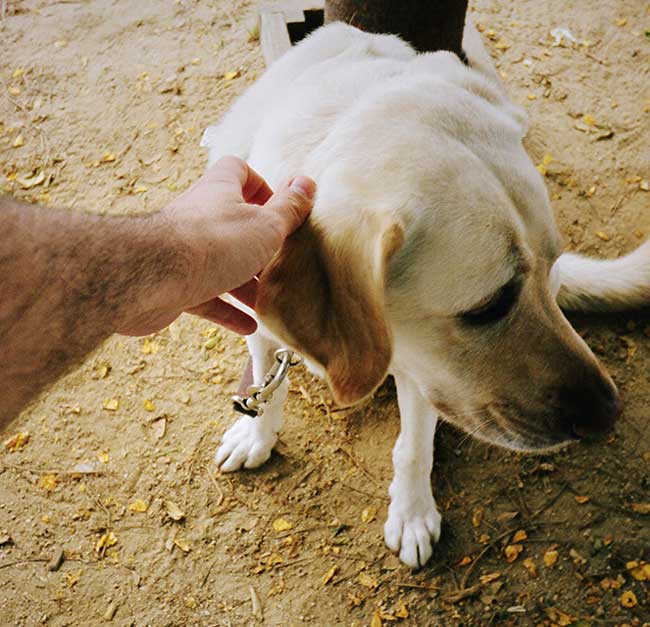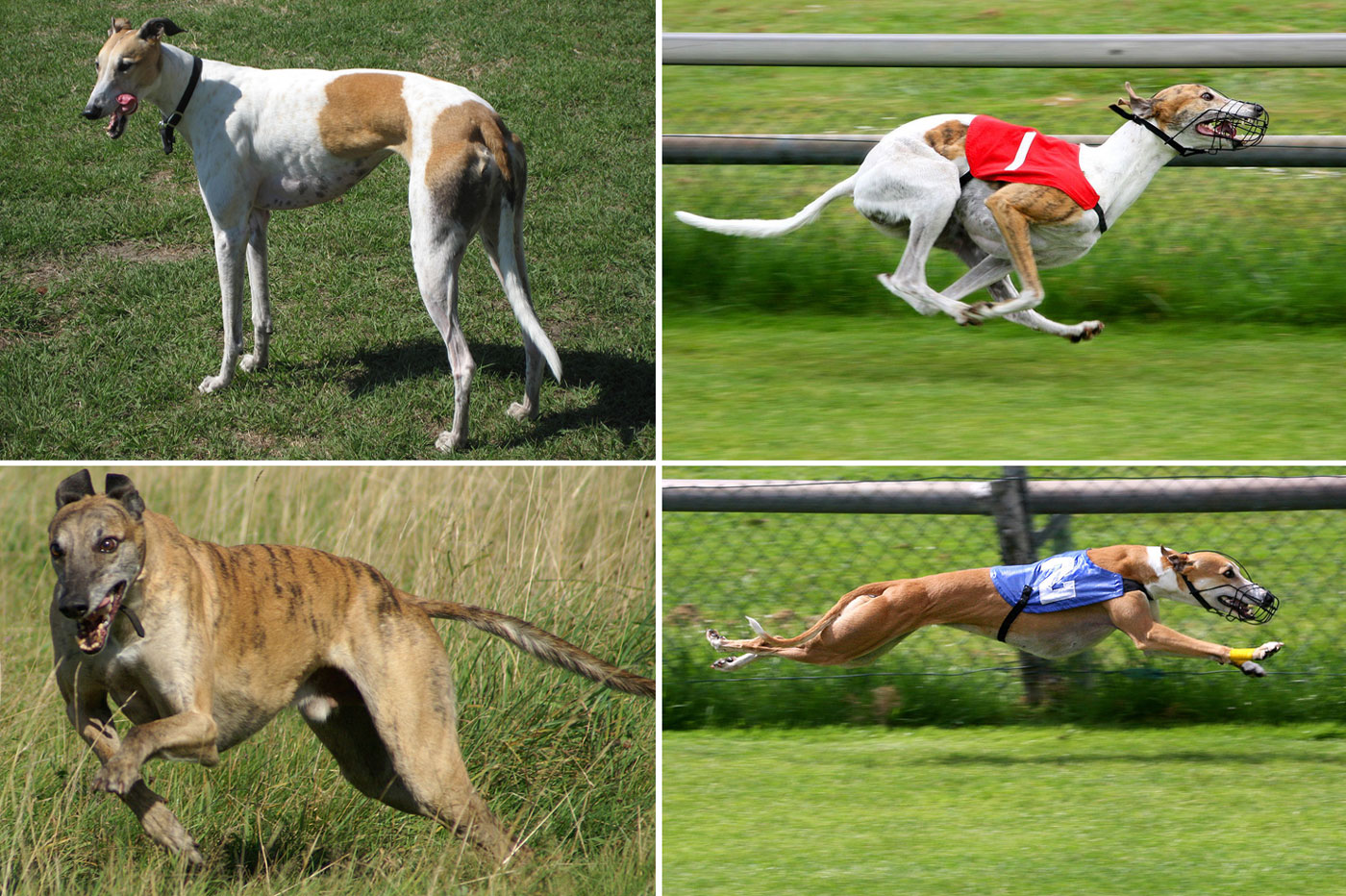- Lifespan: The shape of a dog’s face gives an indication of how long it will live. Dogs with pointed, slightly wolf-like faces typically live the longest. Dogs with very flat faces, such as bulldogs, usually live shorter lives
- Dog love: Weird dog laws include: 1) police officers in Palding, Ohio, are allowed to bite dogs to keep them quiet and 2) dogs and cats in Ventura County, California, are not allowed to mate without a written license
- No barking: Basenji is the only dog breed that never barks
- Toxic substances: Raisins, grapes, chocolate, caffeine, cooked onions, apple and pear seeds are all toxic substances for dogs
- Blood pressure: It is scientifically proven that dog owners’ blood pressure is lowered when they exercise dogs
- Wolf: Today’s domesticated dogs (Canis lupus familiaris) are descended from the gray wolf (Canis lupus), which was domesticated 15,000 – 33,000 years ago
- Offspring: A bitch and her offspring (bitches) can theoretically produce 4,372 puppies in 7 years if they are allowed to mate freely
- Sweat: Dogs have sweat glands between the pads of their paws
- Newborn puppies: Puppies are born blind, deaf and toothless
- Stuff: Dogs don’t like to be hugged to the same extent as humans and primates. This is because dogs interpret this gesture differently; when an animal puts its limbs over another animal, this is a sign of dominance in the canine world

Fact: It is scientifically proven that dog owners’ blood pressure is lowered when they exercise dogs
The world’s…
- Smallest dog: The world’s smallest dog to date was a Yorkshire Terrier, measuring 6.35 cm at shoulder height and 8.9 cm in length. It weighed only 113 grams!
- Heaviest dog: The world’s heaviest dog ever was the English Mastiff Zorba, weighing 156 kg!
- Fastest dog: The world’s fastest dog breed is the Greyhound, which can run up to 72 km/h
- Oldest dog: The world’s oldest dog was the Australian Shepherd called ‘Bluey’, who lived to be 29 years, 6 months and 12 days old
Dogs’ senses
- Color vision: Contrary to popular belief, dogs are not color blind. However, they do see fewer colors than humans and generally see best in semi-darkness
- Hearing: Dogs’ ears are controlled by 18 different muscles that are used to turn their ears towards sounds when they hear them. A dog can find a sound source in 1/600th of a second and can also hear sounds at 4 times the distance of humans
- Sense of smell: Dogs’ sense of smell is about 1,000 times better than humans. Dogs have more than 220 million scent cells, whereas humans only have around 5 million. The part of the brain used to interpret scent is also about 4 times larger in dogs than in humans
- Sense of smell in practice: Examples of things that some dogs can find using their sense of smell include bodies underwater, termites hiding and natural gas 40 feet underground. There have even been examples of dogs finding human cancers that doctors have been unable to detect
- Flavored onions: Cats have only 473 taste buds, while dogs have around 1,700. Humans, on the other hand, have around 9,000

Fact: Greyhounds can run up to 70 km/h, making them the fastest dog breed in the world
More facts about dogs
- Urine: There are different odors in dog urine, which are used by other dogs to decipher if the peeing dog was young or old, male or female, sick or healthy, and happy or angry
- Marking: Male dogs will usually try to urinate as high up a pole as possible to leave a message to other dogs that they are large and dangerous. Some wild dogs in Africa even run up tree trunks while urinating to appear very large
- Smile, smile, smile: When humans smile – and bare their teeth – most dogs will typically perceive this as a sign of aggression
- Dog snouts: Dog nose prints are as unique as human fingerprints and can therefore be used to identify them
- Philosophical dogs: Plato (a Greek philosopher) once said that “a dog has the soul of a philosopher”
- Dachshunds: Dachshunds have long been popular in European royal houses. They were originally bred to hunt badgers because the dachshund’s small, elongated body was well suited to penetrate badger burrows
- Fish food: A missing dachshund was found in the stomach of a huge catfish in Berlin in 2003
- War dogs: During the Middle Ages, large Great Dane and Mastiff dogs were used in warfare in some parts of Europe. The dogs wore mail or armor and spiked collars
- Shoulders: A dog’s pasterns are not connected to the rest of its skeleton, giving it greater flexibility when running
- Most dogs: The largest number of dogs ever owned by one person was 5,000 mastiffs owned by Kublai Khan (a Mongolian ruler who was also Emperor of China)
- Puppy rejection: A mother dog sometimes rejects her newborn pups – especially if they are born by caesarean section and cleaned before she gets them back
- Rum dog: The Russian street dog Laika was the first mammal to orbit the Earth. This happened in the Soviet spacecraft Sputnik in 1957. Although she died in space, she managed to have 4 puppies with US President John F. Kennedy’s terrier, Charlie
- Dog nations: It is estimated that there are around 400 million dogs in the world. The three countries with the largest dog populations are: USA (75.8 million dogs), Brazil (35.7 million dogs) and China (27.4 million dogs)
- Learning: Dogs are much more likely to learn spoken commands if they are given in conjunction with hand signals or other bodily cues
- Street lamps: In Croatia, researchers found that a certain chemical in dog urine destroyed the metal in the lamp posts on the roads, resulting in street lamps falling over


